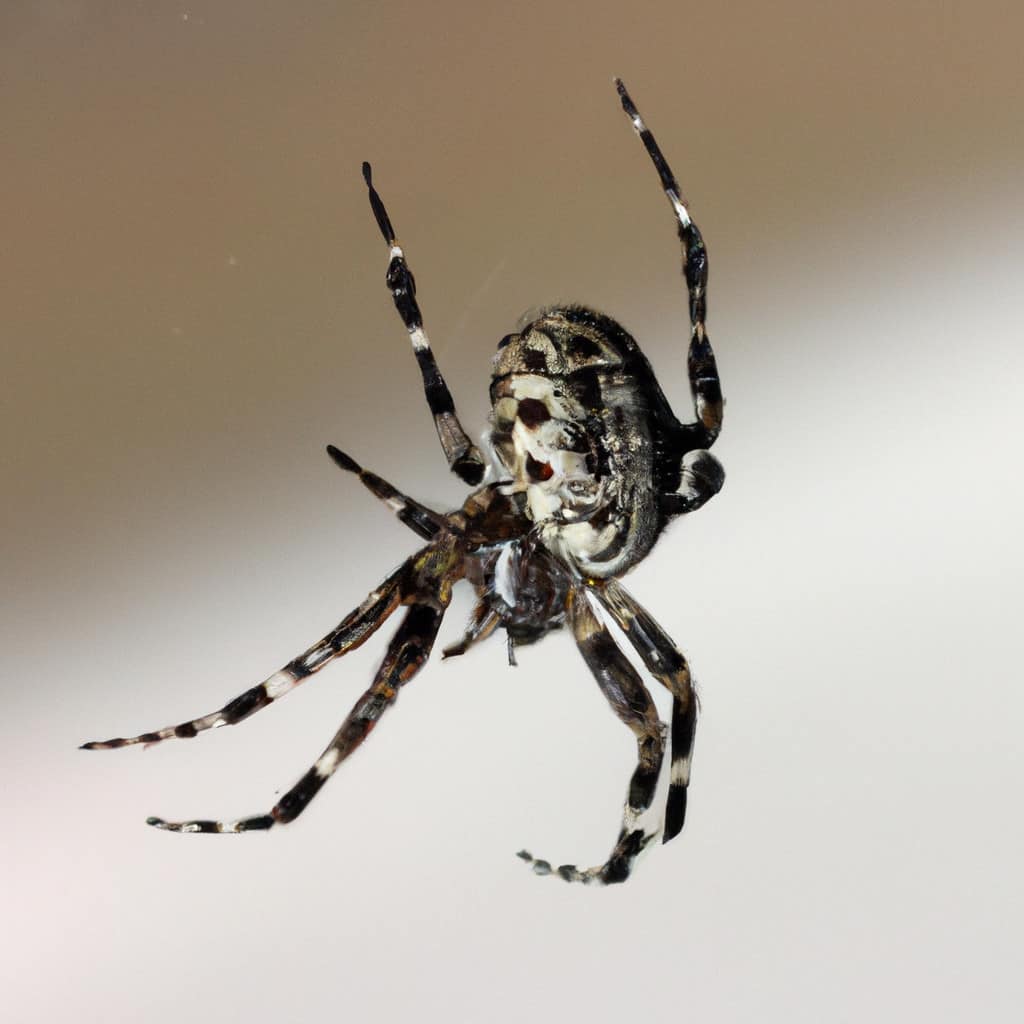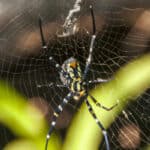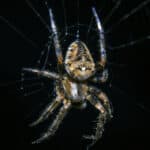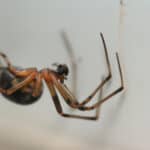When it comes to spiders, their reproductive process can be fascinating to learn about. One of the most interesting aspects of spider reproduction is the incubation period for spider eggs. Many people wonder how long it takes for spider eggs to hatch, and the answer can vary depending on several factors. In this article, I will explore the topic of spider egg incubation and provide you with the information you need to understand this process.
Spider eggs are typically housed in silk egg sacs that are fiercely protected by the mother spider. The amount of time it takes for these eggs to hatch can depend on several factors, including the species of spider, temperature, humidity, food supply, and size of the egg sac. Some species of spiders can have wildly different incubation periods, ranging from a few weeks to several months. Additionally, some spiders in temperate regions will overwinter in the egg sac and emerge in the spring. In many spider species, the mother guards the egg sac from predators until the young hatch, while other species will place the sac in a secure location and leave the eggs to their own fate.
Key Takeaways
- The amount of time it takes for spider eggs to hatch can vary depending on several factors, including the species of spider, temperature, humidity, food supply, and size of the egg sac.
- Some spiders in temperate regions will overwinter in the egg sac and emerge in the spring.
- In many spider species, the mother guards the egg sac from predators until the young hatch, while other species will place the sac in a secure location and leave the eggs to their own fate.

Spider Reproduction
As with all living creatures, spiders reproduce to continue their species. The process of spider reproduction involves both males and females, with the males typically seeking out females to mate with.
Female spiders are the ones who lay the eggs. When a female spider becomes sexually mature, she will produce eggs that need to be fertilized by a male spider. Once fertilized, the female spider will typically create an egg sac to protect the eggs until they hatch.
Male spiders play an important role in spider reproduction as they are the ones who fertilize the female’s eggs. Once a male spider reaches sexual maturity, he will begin to search for a female to mate with. Mating can be a dangerous process for the male spider, as the female may see him as prey and attempt to eat him.
After mating, the female spider will typically lay her fertilized eggs in an egg sac. The number of eggs laid can vary depending on the species of spider, with some laying only a few eggs while others can lay up to a thousand.
The incubation period for spider eggs can vary greatly depending on factors such as the species of spider, temperature, humidity, and size of the egg sac. Some spiders will overwinter in the egg sac and emerge in the spring, while others may hatch within a few weeks.
In conclusion, spider reproduction involves both male and female spiders, with the male fertilizing the female’s eggs. Once fertilized, the female will typically create an egg sac to protect the eggs until they hatch. The incubation period for spider eggs can vary greatly depending on various factors.
Egg Laying and Incubation
As a spider, I know firsthand how important egg laying and incubation are to the survival of our species. It all starts with the female spider creating a silk egg sac to protect her eggs. Depending on the species, the number of eggs in each sac can vary from a few dozen to several hundred.
Once the eggs are laid, the mother spider will either guard the sac from predators or hide it in a secure location and leave it to its own fate. Some spider species will overwinter in the egg sac and emerge in the spring, while others will hatch within a few weeks.
The incubation period of spider eggs can vary widely depending on factors such as temperature, humidity, and food supply. Some species of spiders may take only a few weeks to hatch, while others may take several months.
One interesting thing to note is that the shape of the egg sac can also vary depending on the species. For example, the garden spider’s egg sac is relatively spherical, with one end being narrower than the other.
In conclusion, egg laying and incubation are vital to the survival of spider species. The silk egg sacs that female spiders create to protect their eggs are an essential part of the process. The length of the incubation period can vary depending on several factors, but the mother spider will typically guard the egg sac until the young hatch.
Hatching Process
Have you ever wondered how long it takes for spider eggs to hatch? The hatching process of spider eggs can vary depending on the species, temperature, humidity, food supply, and size of the egg sac. Let’s take a closer look at the hatching process of spider eggs.
Spider eggs generally take a few weeks to hatch, but some species may take several months or even years to hatch, especially in colder climates. The hatching process is triggered by a combination of external factors, such as temperature, humidity, and photoperiod, and internal factors, such as embryonic development.
In many spider species, the mother guards the egg sac from predators until the young hatch. Other species will place the sac in a secure location and leave the eggs to their own fate. The egg sac is made for protecting the eggs from the elements and against predators such as birds and ants.
Different species of spiders can have wildly different incubation periods, ranging from a few weeks to several months. Some spiders in temperate regions will overwinter in the egg sac and emerge in spring. The emergence of spiderlings from the egg sac is a fascinating sight to behold.
In conclusion, the hatching process of spider eggs can vary depending on many factors. Spider eggs generally take a few weeks to hatch, but some species may take several months or even years to hatch. The emergence of spiderlings from the egg sac is a remarkable event that can be witnessed in many spider species.
Spiderling Development
After a few weeks of incubation, spider eggs will hatch into spiderlings. The spiderlings will emerge from the egg sac and begin their journey towards maturity. During this stage, spiderlings are highly vulnerable to predators, and their survival rate is relatively low.
Spiderlings undergo several molts as they grow and mature. Molting is the process by which spiders shed their exoskeletons and replace them with larger ones. During this process, spiderlings become larger and more developed, and their exoskeletons become thicker and harder. The number of molts a spiderling undergoes varies depending on the species, but it usually ranges from 4 to 12.
As spiderlings grow and mature, they become more independent and less vulnerable to predators. They begin to hunt for their own food and establish their own territories. The rate of growth and maturation varies depending on the species, but it usually takes several months to reach maturity.
Once a spider reaches maturity, it will begin to mate and reproduce. The lifespan of a spider varies depending on the species, but most spiders live for several months to several years.
Overall, spiderling development is a crucial stage in the spider life cycle. It is a time of rapid growth and maturation, and it sets the stage for the spider’s future survival and reproduction.
Predators and Survival
As we learned earlier, spider eggs take between one and four weeks to hatch. During this time, the mother spider will guard the egg sac from predators until the young hatch. However, some spider species will place the sac in a secure location and leave the eggs to their own fate.
Predators of spider eggs include birds, wasps, ants, and other spiders. In order to protect their eggs, some spider species will encase them in a silken pouch, while others will wrap them in leaves. Some species will even carry the egg sac with them as they move around.
In addition to protection from predators, spider eggs also require specific environmental conditions to hatch successfully. Factors such as temperature, humidity, and photoperiod can all play a role in the hatching process. For example, some species may take several months or even years to hatch in colder climates.
Overall, the survival of spider eggs depends on a combination of protection from predators and suitable environmental conditions. While some species have developed unique ways to protect their eggs, others rely on luck and chance for survival.
Species-Specific Spider Egg Information
Different spider species have varying incubation periods for their eggs. For example, wolf spiders and jumping spiders generally have shorter incubation periods, with their eggs hatching within a few weeks.
Black widow spiders, on the other hand, have a longer incubation period of about 30 days. Hobo spiders and garden spiders have incubation periods of around 14 days. Brown recluse spiders have an incubation period of about 30 to 36 days.
Tarantulas and other mygalomorph spiders have a longer incubation period, with some species taking up to several months for the eggs to hatch. House spiders also have a longer incubation period, with some species taking up to 2 to 3 months for the eggs to hatch.
It’s important to note that the temperature and humidity of the environment can also affect the incubation period. Warmer and more humid conditions generally result in faster hatching times, while cooler and drier conditions can delay hatching.
Overall, the incubation period for spider eggs can vary greatly depending on the species and environmental conditions.
Spider Behavior and Environment
As we learned earlier, the time it takes for spider eggs to hatch can vary greatly depending on several factors. One such factor is the spider’s behavior and environment. Let’s take a closer look at how these factors can affect the incubation period of spider eggs.
Spiders are known for their ability to spin webs, which they use for a variety of purposes such as catching prey and creating a safe space to lay their eggs. The type of web a spider spins can also affect the incubation period of its eggs. For example, some spiders create a protective silk egg sac that they fiercely guard until the young hatch, while others simply lay their eggs on a web and leave them to their own fate.
Another factor that can affect the incubation period of spider eggs is the spider’s dispersal behavior. Some spiders use a process called ballooning to disperse their young. This involves the spider releasing a strand of silk into the air and allowing the wind to carry it and the spider to a new location. The spider then lays its eggs in this new location, which can have a different environment than its previous location, potentially affecting the incubation period.
The environment in which the spider lays its eggs can also play a role in the incubation period. Humidity and temperature are two key environmental factors that can affect the development of spider eggs. Spiders that live in environments with high humidity may have shorter incubation periods, while those in drier environments may have longer incubation periods. Similarly, spiders that live in colder environments may have longer incubation periods than those in warmer environments.
Some spider species also have the ability to overwinter in their egg sacs, meaning they remain in the sac throughout the winter and emerge in the spring. This can affect the incubation period as well, as the eggs may be exposed to colder temperatures for longer periods of time.
Overall, spider behavior and environment can have a significant impact on the incubation period of spider eggs. Understanding these factors can help us better predict when spider eggs will hatch and how we can best protect them.
Prey and Diet
As a spider, my diet consists mainly of insects. The type of prey I consume depends on my species, size, and location. Some common prey items include flies, cockroaches, mosquitoes, and moths.
Flies are a popular food source for many spider species, including myself. They are attracted to light and often fly near windows and doors, making them easy targets. Cockroaches are another common prey item, especially for larger spiders. They are often found in dark, damp places, such as basements and crawl spaces.
Mosquitoes are a favorite of many spiders, as they are both small and plentiful. They are often found near standing water, such as ponds and swamps. Moths are also a popular food source, especially for orb-weaving spiders. They are attracted to light and often get caught in spider webs.
It’s important to note that not all spiders eat the same prey. Some species, such as the jumping spider, are known to eat other spiders. Additionally, some spiders are known to eat other types of arthropods, such as mites and ticks.
Overall, my diet as a spider is diverse and varied, depending on my species and location. I rely on my ability to spin webs and hunt to capture my prey and ensure my survival.
Pest Control and Prevention
As an expert in pest control, I know that prevention is key to avoiding spider infestations. One way to prevent spider eggs from hatching in your home is by vacuuming regularly. This will remove any spider eggs and webs that may be lurking in corners and crevices.
In addition to vacuuming, there are other ways to discourage spiders from making your home their own. One of the most effective methods is to eliminate their food source by keeping your home clean and free of other insects. Spiders feed on insects like moths, beetles, cockroaches, and fleas, so it’s important to keep these pests out of your home.
If you do find spider eggs in your home, it’s important to get rid of them before they hatch. One effective method is to use a pest control spray specifically designed to target spider eggs. Simply mix the appropriate amount of spray with water and apply it directly to the eggs and webbing.
Another method is to physically remove the eggs and webs using a paper towel or tissue. Be sure to dispose of them in a sealed bag and throw them away in an outdoor trash can.
Remember, it typically takes between two to three weeks for spider eggs to hatch, so it’s important to act quickly if you find them in your home. By taking these preventative measures and being proactive in getting rid of spider eggs, you can keep your home spider-free.
Frequently Asked Questions
How long does it take for spider eggs to hatch?
The amount of time it takes for spider eggs to hatch varies depending on the species of spider, the temperature, and other factors. As a general rule, spider eggs hatch within 2 to 3 weeks, depending on the season and the spider species.
How can you tell if a spider egg sac is empty?
If the spider egg sac is white and papery, it is likely empty. If it is still plump and firm, it may still contain eggs.
Where do spiders lay their eggs in houses?
Spiders typically lay their eggs in secluded areas such as corners, crevices, or dark places. Common areas in a house where spiders lay their eggs include basements, attics, closets, and garages.
Should you leave spider eggs in your house?
It’s best to remove spider eggs from your house to prevent infestations. Spider eggs can hatch and lead to a spider infestation in your home.
What kills spider eggs instantly?
A solution of water and vinegar can help kill spider eggs. Simply mix one part vinegar to two parts water and spray the solution directly onto the spider egg sac.
How many eggs do spiders lay at once?
The number of eggs a spider lays at once varies depending on the spider species. Some spiders lay only a few eggs, while others can lay hundreds or even thousands of eggs at once.








